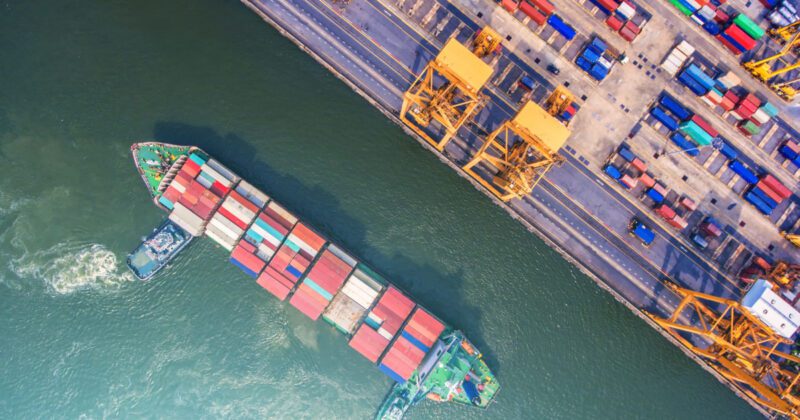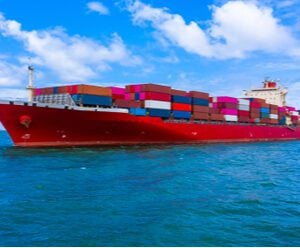
Multiple disruptions putting pressure on supply chain

Economists and analysts have now largely converged on the fact that the global economy is slowing down. Equally, most agree that some countries will almost certainly turn recessionary in the coming quarters.
Ocean container markets are not quite as taut as they have been for the last two years under Covid-19. But the northern hemisphere summer is still proving challenging for ocean shipping stakeholders as a slew of new and re-occurring supply chain disruptions blight the best laid plans.
“Forwarders are used to managing crises and finding solutions to ensure customers’ businesses run smoothly,” said Kelvin Leung, CEO, DHL Global Forwarding Asia Pacific. “Covid-19 has seen those challenges increase and this summer has seen no let-up."
“There are concerning economic signs, but we are still seeing green shoots that the freight pipeline remains healthy, even though volumes might be levelling off from Covid-19 peaks and returning to more historically normal levels,” added Leung.
Summer sun turning up the heat in Europe supply chain
Across Europe, sizzling temperatures throughout summer have left the continent’s rivers dangerously low. The Danube River, Europe’s longest, was barely navigable for barge traffic by mid-August. At the same juncture, the Rhine, a key industrial artery, was all but closed to freight at some sections as water levels fell to historic lows.
European ports have also been hit by strike action. Negotiations between unions and ports operators in Germany are ongoing while in the UK workers at the ports of Liverpool and Felixstowe have announced strikes in August.
The lack of barge shipping options is piling more pressure on already stretched European rail and road networks.
China exports slowed by ongoing pandemic restrictions
In China, factory activity unexpectedly shrank in July as ongoing Covid-19 outbreaks impacted operations. The official manufacturing purchasing managers’ index (PMI) fell to 49.0 in July, from 50.2 in June, with new orders and output both registering declines, according to China’s National Bureau of Statistics. In part, this is because fresh Covid-19 lockdowns in key production regions around Shenzhen in the south and Tianjin in the north have disrupted manufacturing.
Global shipping has also suffered disruptions in recent weeks as China has conducted live-fire military exercises in the Taiwan Strait.
Improved U.S. port situations, but congestion remains
Congestion at U.S. West Coast ports, particularly the Los Angeles and Long Beach facilities which act as the main gateway to North America, has improved through 2022.
Even so, overall U.S. port congestion is not seeing much improvement from the start of the year as congestion has instead shifted to the Gulf and East coast ports. Over 150 ships were waiting off U.S. ports in late July with Savannah, Georgia, New York, New Jersey and Houston among the worst performers. The congestion is the result of record high imports to the U.S. East Coast this year as shippers have sought to avoid delays on the West Coast.
Carrier schedule reliability has plummeted as a result. In June schedule reliability on East Coast services was just 18.7 percent, while vessels arriving late suffered an average delay of nine days, according to Sea-Intelligence.
Economic deterioration
Rising prices of many products alongside slowing economic growth are, of course, dampening economic forecasts. In July, the International Monetary Fund (IMF) downgraded its outlook, forecasting global GDP growth of 3.2 percent this year, a cut of 0.4 percentage points from its April forecast.
The forecast for annual global growth in 2023 was also revised, down 0.7 percentage points to just 2.9 percent.
In terms of freight demand, IMF forecasts for advanced countries – the biggest buyers of many containerised products – were cut even more aggressively. The U.S. economy is now forecast by the IMF to grow 2.3 percent this year (versus a forecast of 3.7 percent in April) and just one percent in 2023 (down from 2.3 percent).
Europe’s biggest economy, Germany, saw a huge 1.9 percentage point downgrade to its GDP growth forecast for 2023 when 0.8 percent growth is now expected. Overall, Europe saw 1.1 percentage point cut to its growth forecast for 2023 when GDP is expected to expand by 1.2 percent.
All of which translates into global trade in goods and services expanding 4.1 percent this year, down 0.9 percentage points from the IMF’s April trade forecast.
Box rates stumble
With macroeconomic headwinds strong and recessions now being forecast for many leading trading economies, it is perhaps unsurprising that container spot freight rates have been falling consistently in recent weeks on headhaul routes out of China. However, although freight rates have fallen a long way this year, this is no precipitous plunge. Freight rates on many lanes are still three to four times higher than pre-pandemic levels.
Even so, carriers have started blanking more sailings in a bid to stop further freight rate slides.
Dominique von Orelli, Global Head, Ocean Freight, DHL Global Forwarding, said much now depends on how quickly central banks can control inflation and limit any major economic contractions.
“It’s clear that carriers will continue to void sailings to maintain the container slot supply-demand balance on key lanes out of Asia to Europe and the US, and also on other trade lanes,” he added. “This means container markets will likely remain relatively tight even if the negative economic forecasts are proven correct. We’re planning for all eventualities and urging customers to do likewise.”
ALSO WORTH READING













 English
English